Begonia Odorata, commonly known as Fragrant Begonia, is a captivating flowering plant that belongs to the Begoniaceae family. The name “Odorata” hints at its most distinctive feature—its delightful fragrance. This perennial plant is cherished not only for its aromatic blooms but also for its ornamental foliage, making it a sought-after choice for gardens and indoor spaces.
Key Characteristics of Begonia Odorata:
- Fragrance: One of the standout features of Begonia Odorata is its pleasant scent. The delicate, sweet fragrance emanates from its blossoms, creating a sensory treat for anyone in proximity.
- Blooms: The flowers of Begonia Odorata come in a spectrum of colors, ranging from soft pinks and whites to deeper shades. The petals are often fringed, adding an extra layer of visual interest.
- Foliage: The leaves are typically asymmetrical and can vary in shape, adding to the plant’s aesthetic appeal. Some varieties showcase vibrant patterns and colors on their leaves.
- Size: Begonia Odorata comes in various sizes, making it suitable for both compact indoor settings and larger garden landscapes.
- Versatility: This begonia thrives in different environments, adapting well to both indoor pots and outdoor garden beds.

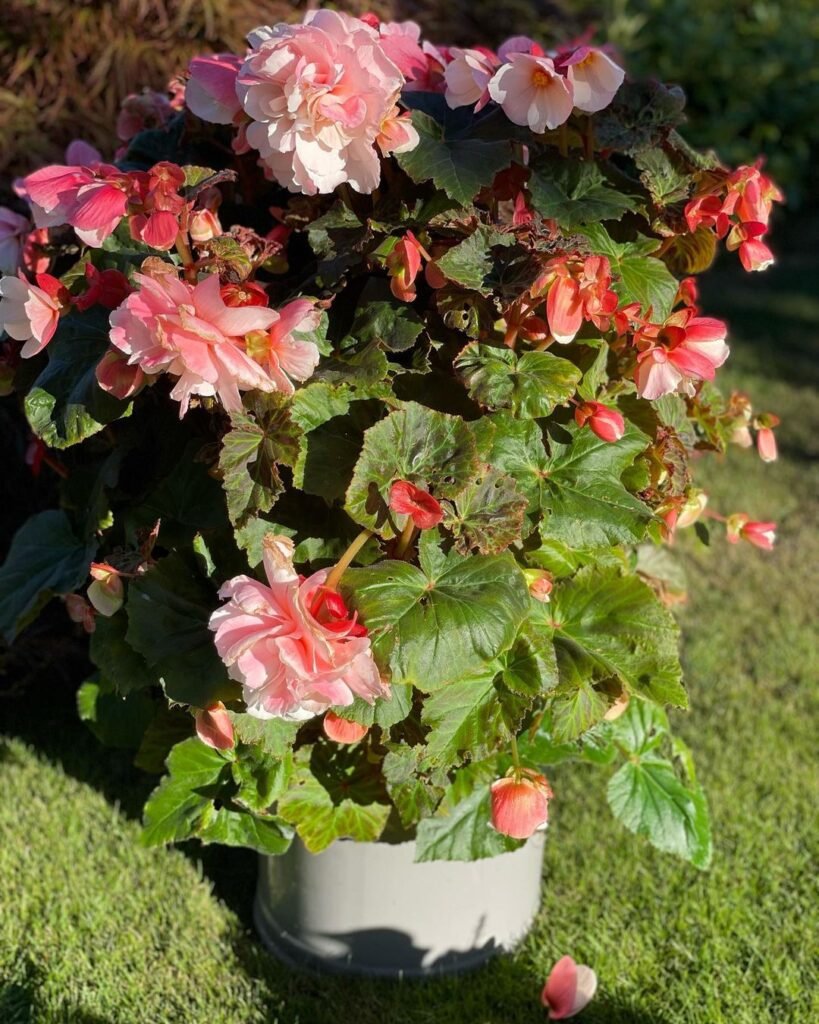
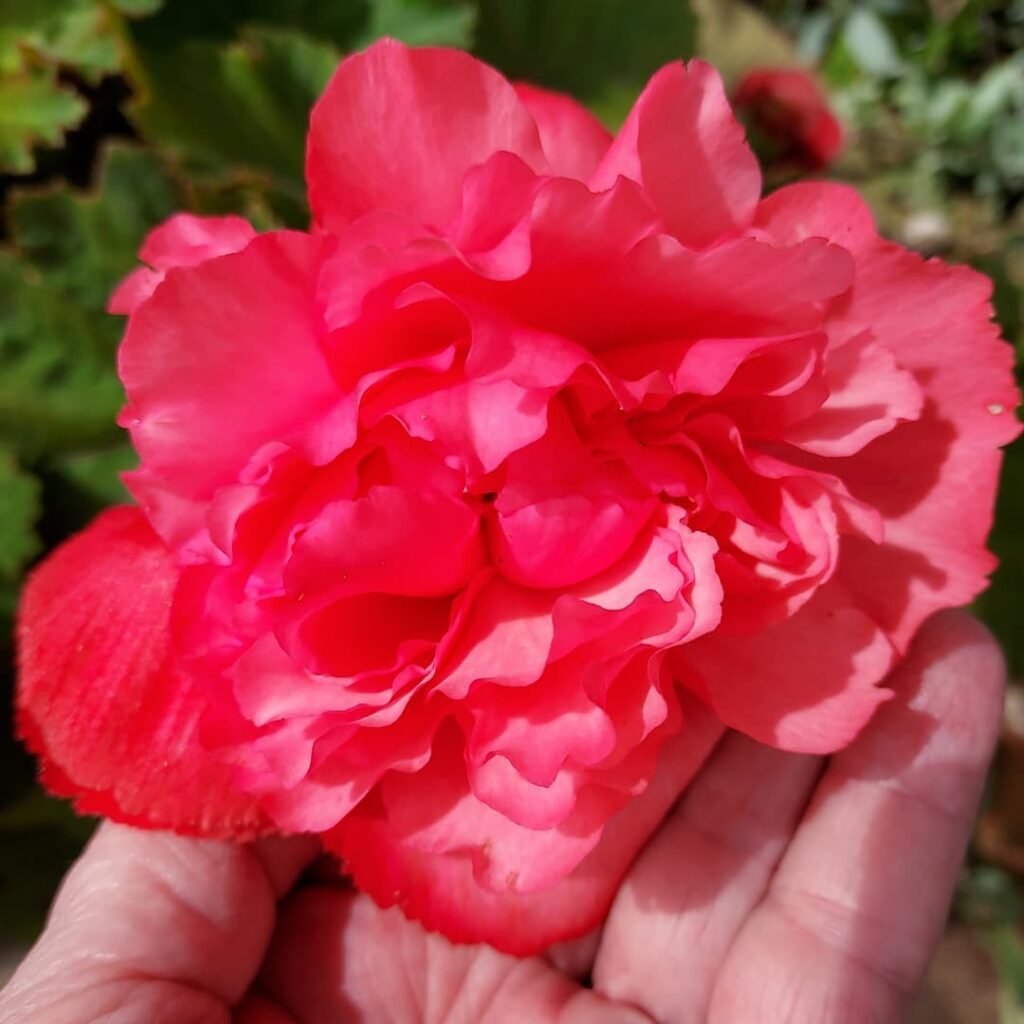
Begonia Odorata Care Guide Overview
Begonia Odorata, while enchanting, requires specific care to flourish. Below is a concise overview of the care essentials for cultivating a thriving Begonia Odorata.
| Care Aspect | Guidelines |
|---|---|
| Light Requirements | Place Begonia Odorata in filtered light or partial shade. Avoid direct sunlight, especially during the hottest parts of the day. |
| Soil Type | Use a well-draining potting mix rich in organic matter. Maintain slightly acidic to neutral soil pH for optimal growth. |
| Watering Schedule | Keep the soil consistently moist but not waterlogged. Water when the top inch of soil feels dry to the touch. |
| Temperature Range | Maintain a temperature between 60°F to 75°F (15°C to 24°C). Protect from drafts and sudden temperature fluctuations. |
| Fertilization | Feed with a balanced liquid fertilizer every 4-6 weeks during the growing season. Reduce fertilization in winter. |
| Pruning Needs | Pinch back stems to encourage bushier growth. Remove dead or yellowing leaves regularly. |
| Propagation Methods | Begonia Odorata can be propagated through stem cuttings or leaf cuttings. Ensure a well-aerated rooting medium. |
| Repotting Frequency | Repot young plants annually in the spring. Use fresh soil mix to replenish nutrients. |
Genus Species & Appearance

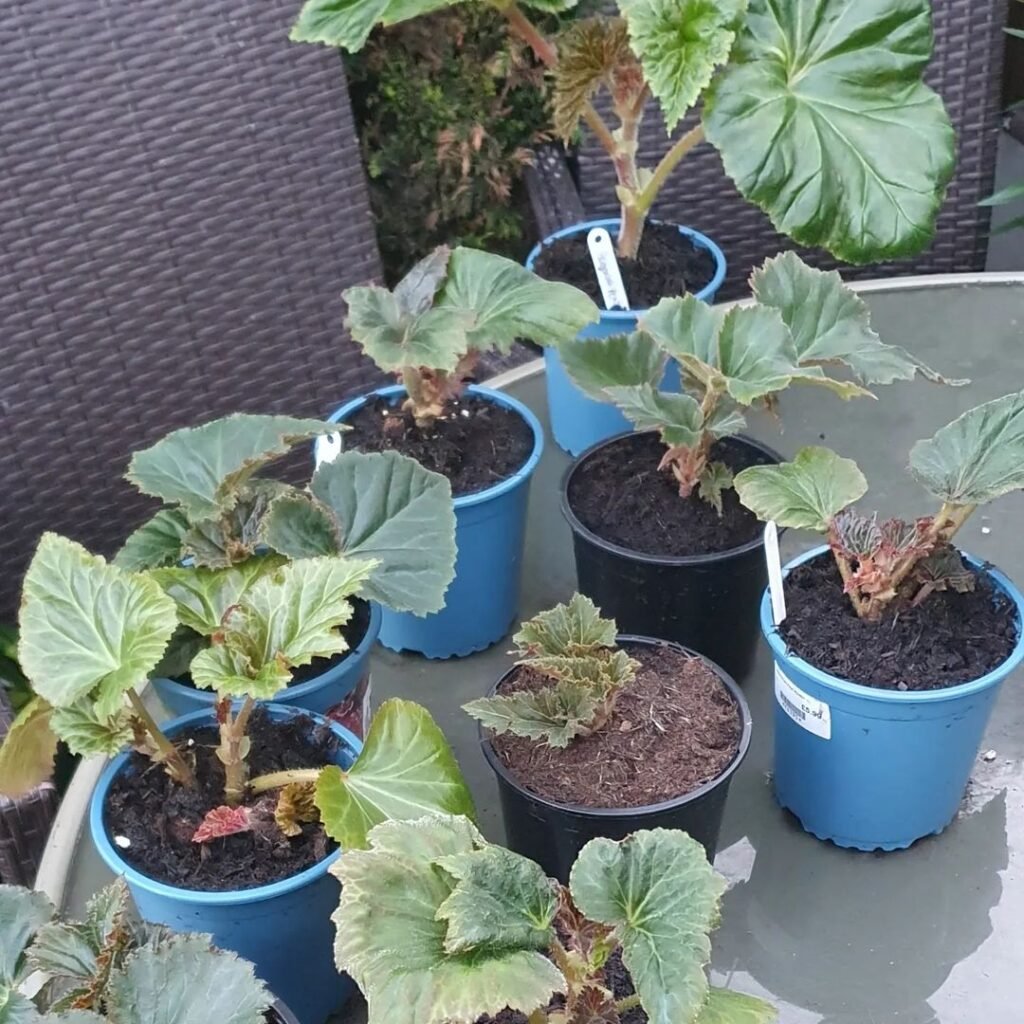
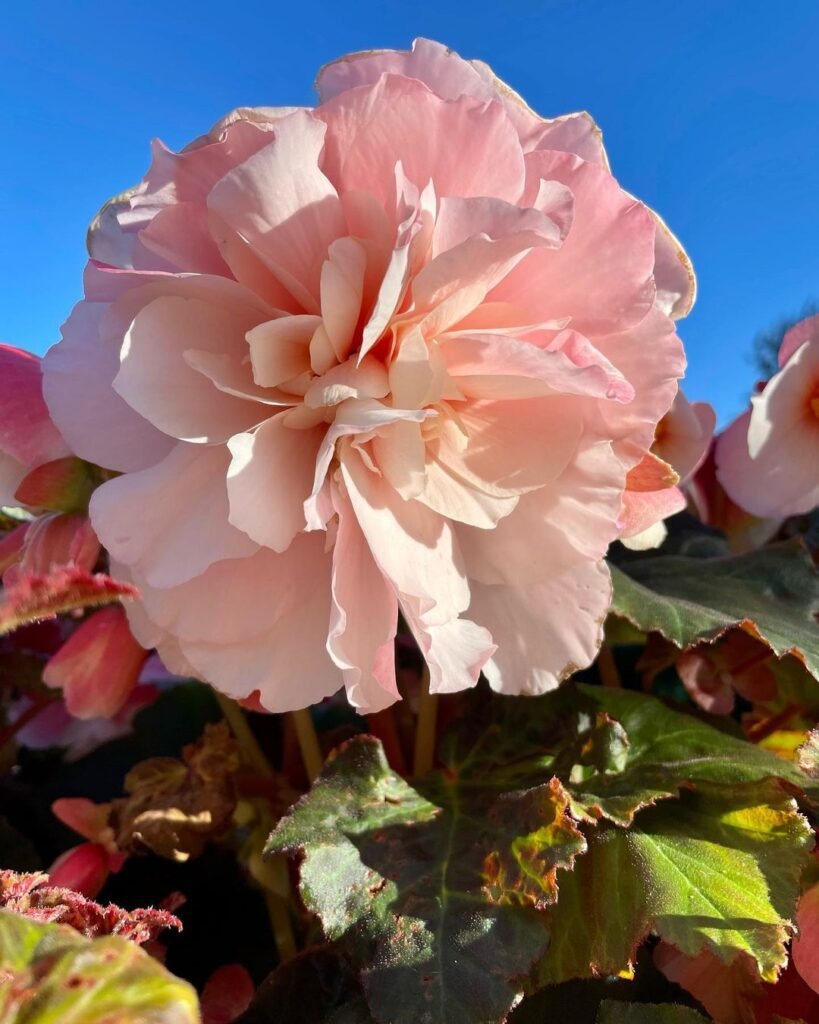
Begonia Odorata belongs to the vast and diverse genus Begonia, which encompasses a wide array of species. The genus is known for its ornamental plants, with Begonia Odorata standing out for its fragrant blooms and distinctive appearance.
Begonia Genus Overview:
The Begonia genus is extensive, comprising over 1,800 species. These plants exhibit incredible diversity in terms of size, shape, and features. From the delicate Begonia Odorata to the bold and showy Begonia rex, each species brings something unique to the botanical tapestry.
Appearance of Begonia Odorata:
- Height and Spread: Begonia Odorata varies in size, with some cultivars growing compactly, reaching around 8 inches in height, while others can stretch to 2 feet or more. The spread is influenced by the specific variety and growing conditions.
- Leaves: The foliage of Begonia Odorata is a visual feast, with asymmetrical leaves that may have serrated edges or intricate patterns. The leaves can range from vibrant green to deep burgundy, adding to the plant’s overall allure.
- Flowers: The flowers are the pièce de résistance of Begonia Odorata. With a delightful fragrance, the blooms showcase a wide spectrum of colors, often with fringed edges. The blossoms can be single or double-petaled, depending on the variety.
Understanding the genus Begonia and the distinct features of Begonia Odorata lays the groundwork for providing optimal care and appreciation for this charming plant.
Not the plant for you? Check out my full list of 78 Types of Begonia!
Begonia Odorata Light and Soil Requirements



To ensure the thriving growth of Begonia Odorata, understanding its light and soil requirements is crucial. Place your Begonia Odorata in a location that receives filtered light or partial shade, avoiding direct sunlight, particularly during the hottest parts of the day.
This plant’s delicate leaves and blossoms benefit from a balance between light exposure and shade. As for the soil, opt for a well-draining potting mix enriched with organic matter.
Maintaining a slightly acidic to neutral soil pH creates an optimal environment for Begonia Odorata to flourish. Regularly check the moisture levels in the soil and adjust your watering routine accordingly to maintain a healthy balance.
Light Conditions:
- Filtered Light: Position the plant in an area where it receives gentle, indirect sunlight throughout the day.
- Partial Shade: Ideal for outdoor settings, partial shade protects Begonia Odorata from intense sunlight, preventing leaf burn.
Soil Recommendations:
- Well-Draining Mix: Choose a potting mix that allows water to flow through easily, preventing waterlogged conditions.
- Organic Enrichment: Incorporate organic matter such as compost or well-rotted manure to enhance soil fertility and structure.
- pH Level: Maintain a slightly acidic to neutral soil pH (around 6.0 to 7.0) for optimal nutrient absorption by the plant.
Watering Begonia Odorata

Proper watering of Begonia Odorata is a key aspect of its care, contributing significantly to its overall well-being. The soil should be consistently kept moist but not waterlogged. Water your Begonia Odorata when the top inch of the soil feels dry to the touch. This helps prevent issues like root rot caused by overwatering.
Pay attention to the changing seasons and adjust your watering frequency accordingly. During the growing season, when Begonia Odorata is actively producing new growth, it may require more frequent watering compared to the dormant winter months.
Watering Tips:
- Use the Right Watering Technique: Water the soil directly around the base of the plant, avoiding splashing water on the leaves to prevent fungal issues.
Begonia Odorata Humidity and Temperature
Creating the optimal humidity and temperature conditions is pivotal for the well-being of Begonia Odorata. Maintain a temperature between 60°F to 75°F (15°C to 24°C) to ensure the plant thrives. Protect it from drafts and sudden temperature fluctuations, as Begonia Odorata is sensitive to extreme changes. In terms of humidity, this begonia appreciates moderate to high humidity levels, mimicking its native tropical environments.
Climate Guidelines:
- Optimal Temperature Range: Keep the surroundings between 60°F to 75°F (15°C to 24°C) for healthy growth.
- Avoid Drafts: Shield Begonia Odorata from drafts and cold air, as sudden temperature changes can stress the plant.
Humidity Recommendations:
- Moderate to High Humidity: Maintain moderate to high humidity levels, especially if the air tends to be dry.
- Humidity Tips: Grouping plants together or using a humidity tray can help elevate humidity around the begonia.
Understanding and regulating light exposure, soil moisture, humidity, and temperature contribute to the overall well-being of Begonia Odorata. These care considerations set the stage for a thriving and fragrant botanical display in your garden or indoor space.
Fertilizing Begonia Odorata

Fertilizing Begonia Odorata is a crucial aspect of its care routine. These plants benefit from a balanced feeding schedule to support healthy growth and vibrant blooms. Use a balanced liquid fertilizer and apply it every 4-6 weeks during the growing season, typically from spring to early fall. However, it’s essential to reduce fertilization in the winter months when the plant is in a dormant phase. Over-fertilizing can lead to salt build-up in the soil, potentially harming the Begonia Odorata. Always follow the recommended dosage on the fertilizer packaging, and consider using a diluted solution for young or newly potted plants.
Fertilization Guide:
| Fertilization Aspect | Guidelines |
|---|---|
| Fertilizer Type | Use a balanced liquid fertilizer with equal N-P-K (Nitrogen, Phosphorus, Potassium) ratios. |
| Application Frequency | Apply fertilizer every 4-6 weeks during the growing season, reducing frequency in the winter. |
| Dosage and Dilution | Follow the manufacturer’s recommendations for dosage, and consider diluting for young or sensitive plants. |
Care Tip: Regularly flush the soil with plain water to prevent fertilizer build-up and maintain a healthy nutrient balance.
Begonia Odorata Pruning and Shaping
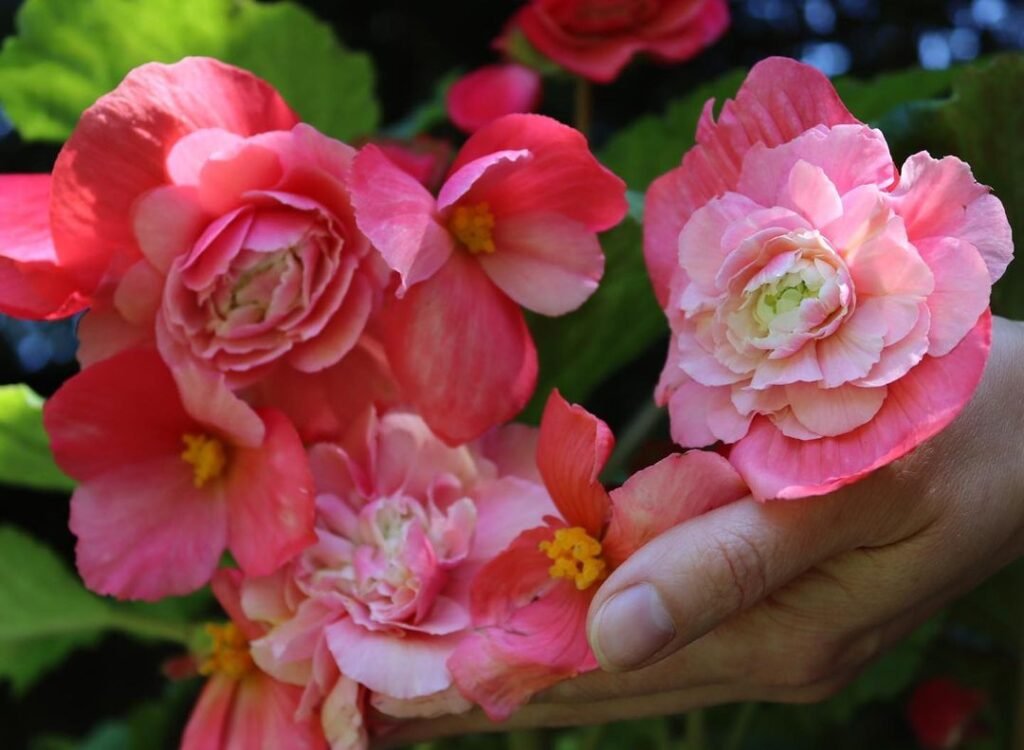


Pruning and shaping Begonia Odorata not only enhances its aesthetic appeal but also promotes bushier growth and a more compact form. Periodically pinch back stems to encourage branching and discourage legginess. Remove any dead or yellowing leaves to maintain a tidy appearance and redirect the plant’s energy towards healthy foliage and blossoms. Pay attention to the natural growth pattern of your specific Begonia Odorata variety and adjust your pruning routine accordingly. If your begonia is getting too leggy, consider more aggressive pruning during the growing season to encourage a denser, fuller plant.
Pruning Tips:
- Pinching Technique: Use your fingers or sharp scissors to pinch or trim the tips of stems just above a leaf node.
- Deadheading Blooms: Remove spent flowers to encourage continuous blooming and redirect energy into new growth.
- Shaping for Form: Prune to maintain the desired shape, whether compact and bushy or cascading and trailing.
Care Tip: Regular pruning not only keeps your Begonia Odorata looking its best but also helps prevent the onset of diseases by improving air circulation.
Begonia Odorata Propagation and Repotting
Propagation and repotting Begonia Odorata are essential steps in the plant’s life cycle, ensuring continued health and vitality. Begonia Odorata can be propagated through stem cuttings or leaf cuttings.
Choose healthy, disease-free stems or leaves for propagation. Place the cuttings in a well-aerated rooting medium, keeping them consistently moist until roots develop. When it comes to repotting, young Begonia Odorata plants benefit from a fresh start annually in the spring. Use a well-draining potting mix, and select a pot that allows for adequate root development.
Propagation Guidelines:
| Propagation Method | Guidelines |
|---|---|
| Stem Cuttings | Select a healthy stem with several leaves, trim below a leaf node, and root in a moist growing medium. |
| Leaf Cuttings | Choose a healthy leaf with a petiole, insert the petiole into the rooting medium, and keep it consistently moist. |
Repotting Tips:
- Annual Repotting: Repot young Begonia Odorata plants annually in the spring to refresh the soil and provide new nutrients.
- Root Inspection: Check the roots during repotting for signs of overcrowding or diseases, and trim if necessary.
Care Tip: Allow newly propagated or repotted plants some time to acclimate to their new environment, and provide a bit of extra care during this transition.
Begonia Odorata Seasonal Care
Proper seasonal care for Begonia Odorata ensures its health and vitality throughout the changing weather. Adapting your care routine to the different seasons is crucial for the plant’s well-being. During the growing season, provide regular fertilization, ample water, and monitor for pests. As the temperatures drop in fall, gradually reduce watering to prevent waterlogged soil. In winter, when the plant is typically dormant, scale back on both watering and fertilization. Be mindful of the indoor temperature and humidity levels, as Begonia Odorata may be sensitive to fluctuations.
Seasonal Care Overview:
| Season | Care Guidelines |
|---|---|
| Spring/Summer | Fertilize regularly, keep the soil consistently moist, and monitor for pests. |
| Fall | Gradually reduce watering to prevent waterlogged soil as temperatures begin to drop. |
| Winter | Scale back on both watering and fertilization, and monitor indoor temperature and humidity levels. |
Begonia Odorata Companion Plants
Choosing the right companion plants for Begonia Odorata can enhance the overall aesthetic appeal of your garden or indoor display. Opt for plants that share similar care requirements and complement Begonia Odorata’s colors and textures. Consider shade-loving companions to create a harmonious environment. Below is a list of potential companion plants that pair well with Begonia Odorata.
Companion Plants for Begonia Odorata:
| Companion Plant | Attributes |
|---|---|
| Impatiens | Shade-loving, vibrant blooms that complement Begonia Odorata. |
| Ferns | Bring texture and greenery, thrive in the same filtered light conditions. |
| Heuchera | Varied foliage colors add visual interest, and they can tolerate shade. |
| Coleus | Colorful foliage, adds a pop of color, and can thrive in partial shade. |
| Hosta | Shade-tolerant with a variety of leaf shapes and sizes, creating a dynamic visual display. |
Note: Adjust companion plant choices based on your specific Begonia Odorata variety and local growing conditions.
If you’re thinking of extending your begonia plant family, I recommend reading up on begonia immense and begonia palmata. They both make great additions to your squad!
Pest Control Tips for Begonia Odorata
Pest control for Begonia Odorata is essential to maintain its health and prevent damage to leaves and blooms. Common pests that may affect Begonia Odorata include aphids, mealybugs, and spider mites. Regularly inspect your plant for signs of infestation, such as discolored or distorted leaves. Below are effective pest control measures for Begonia Odorata.
Pest Control Measures:
| Pest | Control Measures |
|---|---|
| Aphids | Use insecticidal soap or neem oil, and introduce natural predators like ladybugs. |
| Mealybugs | Wipe affected areas with a cotton swab dipped in rubbing alcohol or apply neem oil. |
| Spider Mites | Spray the plant with a mixture of water and dish soap, or introduce predatory mites. |
| Preventive Care | Keep the plant healthy through proper watering and fertilization to minimize pest attraction. |
Implementing regular checks and prompt action against pests ensures a thriving Begonia Odorata, free from potential harm caused by common garden invaders.
Reviving a Sick or Wilting Begonia Odorata
Reviving a sick or wilting Begonia Odorata requires prompt attention and careful intervention. If you notice your plant’s leaves drooping or discoloration, assess the following factors: sunlight exposure, watering routine, and soil conditions.
Adjust the plant’s placement to ensure it receives the appropriate light levels, as too much or too little sunlight can stress the begonia. Check the soil moisture, ensuring it’s consistently moist but not waterlogged.
If the soil is waterlogged, allow it to dry out before adjusting your watering routine. Trim away any severely damaged or yellowing leaves to encourage new, healthy growth. Consider repotting if the soil appears compacted or if the plant has outgrown its current container.
Revival Steps:
| Issue | Revival Steps |
|---|---|
| Drooping Leaves | Adjust sunlight exposure, ensuring it receives appropriate light levels. Trim away severely damaged leaves. |
| Soil Waterlogging | Allow the soil to dry out, adjust watering routine, and consider repotting if the soil remains consistently wet. |
| Yellowing or Discoloration | Evaluate soil conditions, check for nutrient deficiencies, and trim away affected leaves for new growth. |
Care Tip: Act promptly when you notice signs of distress, and tailor your care adjustments to the specific needs of your Begonia Odorata.
Conclusion
In conclusion, cultivating Begonia Odorata is a rewarding endeavor, offering delightful fragrances and stunning blooms. By understanding and implementing proper care practices, you can ensure your Begonia Odorata thrives in its environment.
From providing the right light and soil conditions to addressing seasonal changes and potential pests, each aspect contributes to the overall well-being of this captivating plant. With attention to detail and a bit of care, you can enjoy the beauty and fragrance of Begonia Odorata in your garden or indoor space.
FAQs
Is Begonia Odorata suitable for indoor cultivation?
Yes, Begonia Odorata is well-suited for indoor cultivation. Ensure it receives filtered light, and maintain a consistent watering routine. Indoor humidity levels may need monitoring, especially during the winter months when indoor heating can lead to drier air.
How often should I fertilize Begonia Odorata?
During the growing season, fertilize Begonia Odorata every 4-6 weeks with a balanced liquid fertilizer. Reduce the frequency in winter when the plant is in a dormant phase.
Can Begonia Odorata withstand cold temperatures?
Begonia Odorata is sensitive to cold temperatures and drafts. It thrives in a temperature range of 60°F to 75°F (15°C to 24°C). Protect it from sudden temperature fluctuations, especially during winter.
Should I prune Begonia Odorata regularly?
Yes, regular pruning benefits Begonia Odorata. Pinch back stems to encourage bushier growth, remove dead or yellowing leaves, and deadhead spent flowers to promote continuous blooming.
How do I revive a wilting Begonia Odorata?
To revive a wilting Begonia Odorata, assess sunlight exposure, adjust watering routines, and trim away damaged leaves. Ensure the soil is consistently moist but not waterlogged. Repot if necessary, especially if the soil is compacted.

Writer/Green Thumb/Explorer – Rooted deep in the rich soils of Devon, I’ve cultivated a vast expertise in plant care, helping greenery thrive in homes across the UK. When I’m not crafting detailed plant care guides, I’m journeying through the lush landscapes of the West Country, unearthing nature’s secrets and sharing them with fellow plant enthusiasts. Every leaf has a story, and I’m here to tell it.





